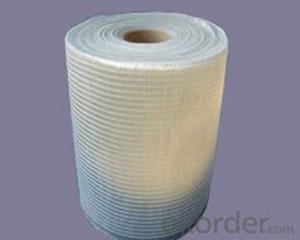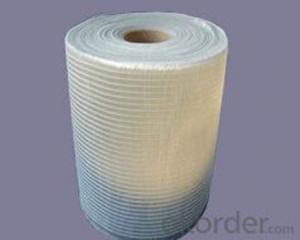Fiberglass Unidirectional Fabric with Density 450gsm
- Loading Port:
- Shanghai
- Payment Terms:
- TT or LC
- Min Order Qty:
- 10000 kg
- Supply Capability:
- 3000000 kg/month
OKorder Service Pledge
OKorder Financial Service
You Might Also Like
Fiberglass Unidirectional Fabric with Density 450gsm
Description
Fiberglass unidirectional fabric is the product combining the roving in certain angel of 0 ℃ or 90 ℃ with polyester yarn.
Products Feature
• Easy to design, high strength in one direction.
• Fiber straight arranged, fiber strength be ultimately used.
• No powder or emulsion, sink quickly, easy to operate.
Applications
Mainly be used as reinforced materials in the composite material industry.
• Matrix: unsaturated polyester resin, vinyl ester resin, epoxy resin and phenolic resin etc.
• Ultimate products: storage tank, tube, pultruded profiles, FRP body of boat, etc.
• Craft: winding, pultrusion, hand lay up, etc.
Images:
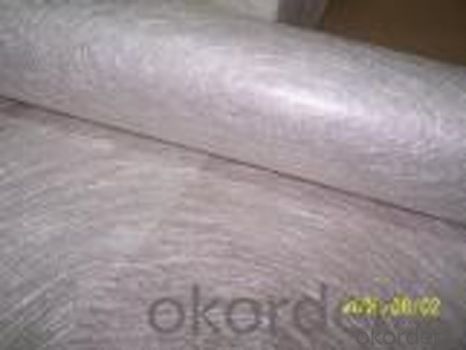
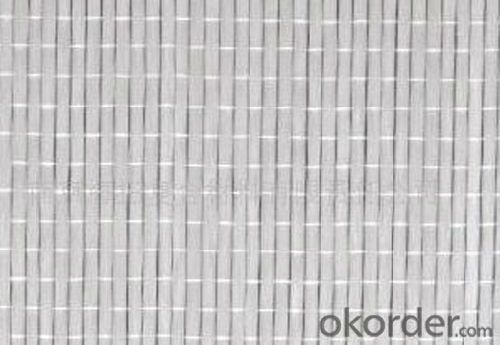
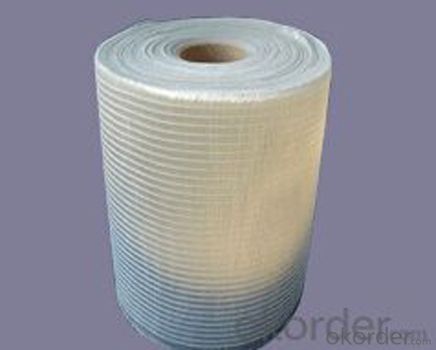

Specifications
specifications
Fibre type
0°Roving
90°Roving
Overall weight
Width
(g/㎡)
(g/㎡)
(g/㎡)
(mm)
EDW227
E-Glass
—
227
227
1524
EDW350
E-Glass
—
350
350
1524
EDW450
E-Glass
—
450
450
1524
EDJ600
E-Glass
480
120
600
1524
EDJ800
E-Glass
600
200
800
1524
EDJ1000
E-Glass
600
400
1000
1524
Packaging: Wrapped in PVC and placed within a cardboard carton.
FAQ
1.Which country do you mainly export to?
A: Our products are very popular in Mid East, India, South East Asia, Latin America, Africa.
2.Q: What’s the advantage of you compared with other suppliers experienced in foreign trade?
A: We have been specialized in FRP products for over decades years and approved by many domestic companies. Except for our quality and price, we’re also able to give you the best service.
3.Q:Can you provide some samples?
A: Yes, of course. We will send you samples for your confirmation before you place firm orders.
- Q:Can fiberglass mat tissue be used for insulation in research laboratories?
- Yes, fiberglass mat tissue can be used for insulation in research laboratories. Fiberglass mat tissue is a common material used for thermal and acoustic insulation due to its excellent insulation properties. It is highly resistant to heat, moisture, and chemicals, making it suitable for laboratory settings. Additionally, fiberglass mat tissue is lightweight and easy to install, allowing for quick and efficient insulation in research laboratories. Its low thermal conductivity helps to maintain stable temperature conditions, ensuring optimal conditions for experiments and reducing energy consumption. Therefore, fiberglass mat tissue is a viable choice for insulation in research laboratories.
- Q:Can fiberglass mat tissue be used for aerospace applications?
- Yes, fiberglass mat tissue can be used for aerospace applications. It is commonly used as a reinforcing material in the aerospace industry due to its excellent mechanical properties, such as high strength-to-weight ratio and resistance to corrosion. Additionally, fiberglass mat tissue can provide thermal insulation and fire resistance, making it suitable for various aerospace components, including aircraft interiors, panels, and structural parts.
- Q:Can fiberglass mat tissue be used for insulating metal roofs?
- Yes, fiberglass mat tissue can be used for insulating metal roofs. Fiberglass is a popular choice for roof insulation due to its excellent thermal properties and durability. It acts as a barrier to heat transfer, helping to keep the interior of the building cooler in hot weather and warmer in cold weather. Additionally, fiberglass is lightweight and easy to install, making it a practical option for metal roofs. The fiberglass mat tissue is typically applied between the metal roof panels and the building's interior, providing an effective insulation layer.
- Q:Can fiberglass mat tissue be used in wet environments?
- Yes, fiberglass mat tissue can be used in wet environments. Fiberglass mat tissue is designed to be resistant to moisture and can withstand exposure to water, making it suitable for applications in wet environments. It is commonly used in industries such as construction, marine, and automotive, where components or structures are exposed to water, humidity, or moisture. The material's resistance to water ensures that it maintains its structural integrity and does not degrade or lose its performance properties when subjected to wet conditions.
- Q:What is the typical thickness of fiberglass mat tissue?
- The typical thickness of fiberglass mat tissue can vary depending on the specific application and intended use. However, it is commonly available in thicknesses ranging from 0.5mm to 3mm. The choice of thickness is determined by factors such as the desired strength, flexibility, and absorption properties required for the particular project or product being manufactured. Thicker fiberglass mat tissue is generally used for applications that require higher levels of strength and durability, while thinner tissue is suitable for more lightweight and flexible applications.
- Q:How is fiberglass mat tissue used in the production of sports equipment?
- Fiberglass mat tissue is widely used in the production of sports equipment due to its unique properties and advantages. This material is a non-woven fabric made from fine glass fibers bonded together with a binder. It has a smooth texture and is lightweight, yet strong and durable. In the production of sports equipment, fiberglass mat tissue is typically used as a reinforcing layer. It helps to enhance the strength and rigidity of the final product, making it more resistant to impact and stress. This is particularly important in sports equipment where durability and performance are crucial, such as in the manufacturing of surfboards, skateboards, snowboards, and tennis rackets. When constructing a surfboard, for example, fiberglass mat tissue is commonly layered over a foam core and then impregnated with epoxy resin. This combination creates a strong and lightweight structure that can withstand the forces exerted by the waves. Similarly, in snowboards and skateboards, fiberglass mat tissue is applied to the wooden core to provide additional strength and stiffness, allowing for better control and responsiveness. Moreover, fiberglass mat tissue is also used in the manufacturing of protective gear like helmets and shin guards. By incorporating this material into the production process, these items can be made more impact resistant and capable of absorbing shocks. This is vital in sports where there is a high risk of injury, as the fiberglass mat tissue acts as a protective layer, dispersing and reducing the force of impacts. Overall, fiberglass mat tissue plays a crucial role in the production of sports equipment by reinforcing structures, enhancing strength and durability, and improving performance. Its lightweight nature combined with its superior mechanical properties makes it an ideal choice for various sporting applications, ensuring athletes can rely on their equipment to perform at their best while minimizing the risk of injury.
- Q:Can fiberglass mat tissue be used for making lightweight doors?
- Fiberglass mat tissue is a lightweight material commonly used in different industries due to its strength and durability. It consists of thin strands of fiberglass bonded together with a binder, resulting in a flexible and strong material. When utilized in door construction, fiberglass mat tissue offers multiple advantages. Firstly, its lightweight nature makes it perfect for creating doors that are easy to handle and install. This is particularly beneficial in residential or commercial settings where doors are frequently opened and closed. Moreover, fiberglass mat tissue possesses exceptional thermal and acoustic insulation properties. This means that doors made with this material can effectively block out noise and regulate temperature, resulting in a more comfortable and energy-efficient environment. Furthermore, fiberglass mat tissue is highly resistant to moisture, rot, and insects, making it a durable and long-lasting option for door construction. It can withstand harsh weather conditions, making it suitable for both interior and exterior doors. In conclusion, fiberglass mat tissue is a versatile material that can be used to create lightweight doors that offer strength, durability, insulation, and resistance to various environmental factors.
- Q:How does fiberglass mat tissue perform in terms of thermal expansion?
- Fiberglass mat tissue generally has a low coefficient of thermal expansion, which means it expands and contracts minimally with changes in temperature. This makes it a suitable material for applications where thermal stability is important.
- Q:How does the weight of fiberglass mat tissue affect its performance?
- The weight of fiberglass mat tissue significantly affects its performance. The weight of the tissue refers to the amount of glass fibers per unit area. Generally, a higher weight indicates a higher concentration of fibers, which leads to improved strength and durability. Firstly, a heavier fiberglass mat tissue provides better tensile strength. The increased number of fibers in the tissue allows it to withstand higher levels of stress and strain without breaking or tearing. This makes it ideal for applications that require high load-bearing capacity, such as structural components in construction or automotive industries. Moreover, the weight of the tissue also influences its stiffness and rigidity. A heavier mat tissue offers better dimensional stability, meaning it will retain its shape and form even when subjected to external forces. This is crucial in applications where the material needs to maintain its structural integrity, such as in boat hulls or wind turbine blades. Furthermore, the weight of the fiberglass mat tissue affects its thermal and acoustic insulation properties. A higher weight typically correlates with better insulation capabilities, as the increased fiber density enhances the material's ability to trap air and reduce heat transfer or sound transmission. This makes it suitable for applications that require effective insulation, such as in buildings or industrial equipment. Lastly, the weight of the fiberglass mat tissue can impact its ease of handling and installation. A lighter tissue may be more flexible and easier to manipulate, making it simpler to fit into complex shapes or tight spaces. On the other hand, a heavier tissue might require additional support or equipment during installation. In conclusion, the weight of fiberglass mat tissue directly influences its performance characteristics, including tensile strength, rigidity, insulation properties, and ease of handling. Therefore, it is essential to consider the intended application and the desired performance requirements when selecting the appropriate weight of fiberglass mat tissue.
- Q:Is fiberglass mat tissue resistant to mildew and rot?
- Indeed, the resistance of fiberglass mat tissue to mildew and rot is undeniable. Crafted from delicate glass fibers interlaced to form a robust and enduring substance, fiberglass stands as a paragon. Its non-porous nature prevents moisture absorption, thus endowing fiberglass mat tissue with exceptional resistance against mildew proliferation and rot-induced decomposition. Moreover, fiberglass often receives protective coatings or additives that amplify its fortitude against these biological detriments. For this reason, fiberglass mat tissue emerges as an exemplary selection in settings where humidity or moisture pose a threat, such as bathrooms, outdoor structures, or regions prone to elevated humidity levels.
1. Manufacturer Overview |
|
|---|---|
| Location | |
| Year Established | |
| Annual Output Value | |
| Main Markets | |
| Company Certifications | |
2. Manufacturer Certificates |
|
|---|---|
| a) Certification Name | |
| Range | |
| Reference | |
| Validity Period | |
3. Manufacturer Capability |
|
|---|---|
| a)Trade Capacity | |
| Nearest Port | |
| Export Percentage | |
| No.of Employees in Trade Department | |
| Language Spoken: | |
| b)Factory Information | |
| Factory Size: | |
| No. of Production Lines | |
| Contract Manufacturing | |
| Product Price Range | |
Send your message to us
Fiberglass Unidirectional Fabric with Density 450gsm
- Loading Port:
- Shanghai
- Payment Terms:
- TT or LC
- Min Order Qty:
- 10000 kg
- Supply Capability:
- 3000000 kg/month
OKorder Service Pledge
OKorder Financial Service
Similar products
New products
Hot products
Related keywords
